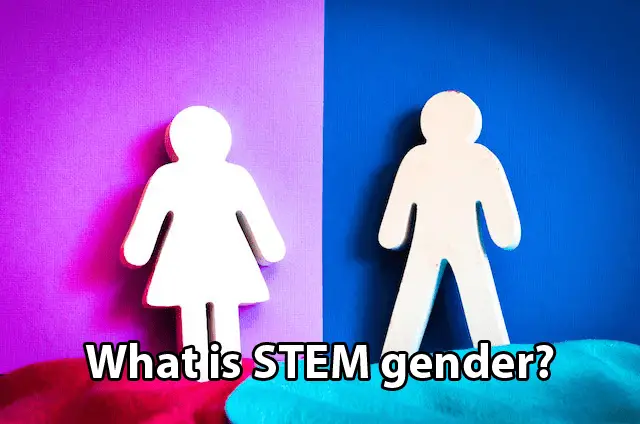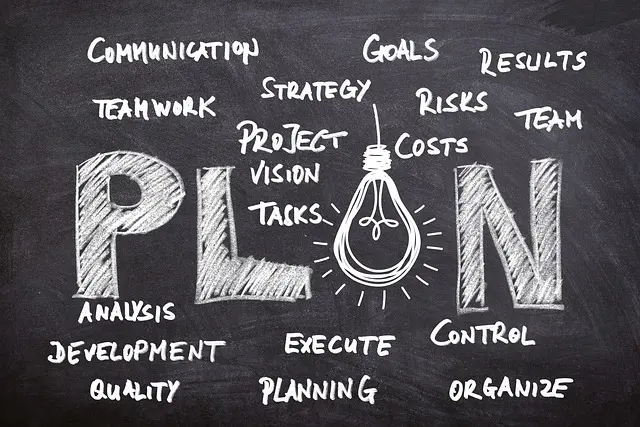
Understanding Gender Representation in STEM Fields
Gender representation in STEM fields continues to be a topic of concern and discussion. Despite efforts to promote diversity and inclusivity, women are still underrepresented in these fields. This gender imbalance not only limits the potential talent pool but also perpetuates stereotypes that associate certain careers with specific genders.
One factor contributing to the underrepresentation of women in STEM is the influence of societal gender stereotypes. From an early age, girls may be discouraged from pursuing interests in science, technology, engineering, and mathematics due to societal expectations or biases. These stereotypes can create barriers for girls who may otherwise excel in these fields and contribute valuable perspectives.
Another factor that contributes to the gender gap in STEM is the lack of female role models. The scarcity of visible women succeeding and thriving in STEM careers can make it difficult for young girls to envision themselves pursuing similar paths. By increasing visibility and showcasing successful female scientists, engineers, mathematicians, and technologists as role models, we can inspire future generations of girls to pursue their passion for STEM.
Promoting gender equality in education and workplaces is crucial for addressing this issue. Encouraging equal opportunities for both genders through educational initiatives such as mentorship programs or scholarships can help bridge the gap between male and female students’ participation rates in STEM subjects. Additionally, creating inclusive work environments where diverse voices are valued will foster innovation by allowing different perspectives to contribute equally within teams.
By understanding the factors contributing to gender imbalance in STEM fields and actively working towards promoting inclusivity at all levels – from education institutions to workplaces – we can create a more equitable future where everyone has an equal opportunity regardless of their gender identity or expression.
The Influence of Gender Stereotypes on STEM Careers
Gender stereotypes play a significant role in shaping the career choices of individuals, particularly in STEM fields. From an early age, children are exposed to societal expectations and biases that associate certain traits with specific genders. Boys are often encouraged towards careers in science, technology, engineering, and mathematics (STEM), while girls may be subtly discouraged or steered towards other fields. This perpetuates the notion that STEM careers are more suitable for men than women.
These gender stereotypes can have profound consequences on the representation of women in STEM careers. Research has shown that girls who internalize these stereotypes may develop lower self-confidence and interest in pursuing STEM subjects. They may also face societal pressure or bias when expressing their passion for these fields. As a result, many talented young women opt out of pursuing STEM careers due to perceived barriers or lack of support.
The influence of gender stereotypes extends beyond childhood into adulthood and professional settings. Women who do enter STEM fields often face challenges such as implicit bias, discrimination, and limited opportunities for advancement compared to their male counterparts. These biases can create hostile work environments where women feel undervalued or not taken seriously based solely on their gender rather than their abilities and qualifications.
By understanding the impact of gender stereotypes on STEM careers, we can begin to address this issue at multiple levels – from educational institutions promoting inclusivity and challenging biased assumptions about gender roles to workplaces implementing policies that foster diversity and equal opportunities for all employees regardless of their gender identity. It is crucial to dismantle these harmful stereotypes so that both men and women feel empowered to pursue their passions without limitations imposed by societal norms.
Exploring the Gender Gap in STEM Education
The gender gap in STEM education continues to be a topic of concern and research. Studies have consistently shown that there is a significant underrepresentation of women in science, technology, engineering, and mathematics fields. This disparity starts early on, with girls often being discouraged or steered away from pursuing STEM subjects due to societal expectations and stereotypes.
One factor contributing to the gender gap in STEM education is the lack of female role models. When young girls do not see women succeeding and thriving in these fields, they may feel less inclined to pursue them themselves. Efforts are being made to increase visibility and representation of women in STEM through initiatives like mentorship programs and showcasing successful female professionals.
Another contributing factor is the prevalence of gender bias within educational institutions. Research has shown that teachers sometimes unintentionally reinforce stereotypes by treating boys’ achievements in math and science as more impressive than those of their female counterparts. Addressing this bias requires training educators to recognize their own biases and provide equal opportunities for all students, regardless of their gender.
Efforts are also being made at the policy level to bridge the gender gap in STEM education. Some countries have implemented measures such as introducing coding classes into school curricula or offering scholarships specifically for girls pursuing STEM degrees. By creating an inclusive environment that supports and encourages all students equally, we can begin to close the gender gap in STEM education.
Examining the Factors Contributing to Gender Imbalance in STEM
One significant factor contributing to the gender imbalance in STEM fields is societal stereotypes and biases. From a young age, girls are often discouraged or steered away from pursuing careers in science, technology, engineering, and mathematics due to prevailing cultural norms that associate these fields with masculinity. This discouragement can manifest through subtle messages conveyed by parents, teachers, and peers or more overt forms of discrimination. As a result, many talented girls may be dissuaded from pursuing their interests in STEM subjects.
Another factor that contributes to the gender imbalance in STEM is the lack of female role models within these fields. Research has shown that having visible female mentors and leaders can greatly impact girls’ interest and confidence in pursuing careers in STEM. When young women see successful women who have excelled in these traditionally male-dominated fields, it helps challenge stereotypes and provides them with tangible examples of what they can achieve.
Additionally, the educational environment itself plays a role in perpetuating gender imbalances within STEM disciplines. Studies have found that classroom dynamics and teaching methods may inadvertently favor boys over girls when it comes to participation opportunities or recognition for achievements. This unequal treatment can lead to lower self-esteem among female students or even deter them from actively engaging with STEM subjects altogether.
By acknowledging these factors contributing to gender imbalance within STEM fields – societal biases and stereotypes, lack of female role models, and educational disparities – we can begin working towards creating more inclusive environments where all individuals have equal opportunities to pursue their passions without being hindered by their gender identity. Addressing these issues requires collaboration between educators, policymakers, industry leaders as well as society at large; only then will we truly achieve greater representation for women across all areas of science and technology.
Challenging Gender Bias in STEM Recruitment and Hiring
Gender bias in STEM recruitment and hiring is a pervasive issue that continues to hinder progress towards gender equality in these fields. Research has consistently shown that women are underrepresented in STEM careers, and one of the key factors contributing to this disparity is the presence of gender bias during the recruitment and hiring processes.
Firstly, studies have found that unconscious biases can influence decision-making when it comes to selecting candidates for STEM roles. These biases often lead to the preference for male applicants over equally qualified female applicants. This not only perpetuates gender stereotypes but also limits opportunities for talented women who could contribute significantly to the field.
To challenge this bias, organizations need to adopt strategies such as blind resume screening and structured interviews. Blind resume screening involves removing any identifying information from resumes, such as names and genders, so that recruiters evaluate candidates solely based on their qualifications. Structured interviews involve asking all candidates standardized questions designed to assess their skills rather than relying on subjective judgments.
Additionally, promoting diversity awareness among recruiters and implementing diversity training programs can help combat unconscious biases. By educating individuals about their own biases and providing them with tools to mitigate them, organizations can create a more inclusive environment where all candidates are given equal consideration based on merit alone.
Ultimately, challenging gender bias in STEM recruitment and hiring requires a concerted effort from both individuals within organizations and society at large. By addressing these biases head-on through conscious efforts like blind resume screening, structured interviews, diversity training programs, we can work towards creating a more equitable system that recognizes talent regardless of gender identity.
Promoting Gender Equality in STEM Education and Workplaces
One way to promote gender equality in STEM education is by implementing inclusive and diverse curriculum. By incorporating examples, case studies, and projects that highlight the contributions of both men and women in STEM fields, students can gain a more comprehensive understanding of the subject matter. This not only helps to break down stereotypes but also encourages girls to pursue their interests in science, technology, engineering, and mathematics.
Moreover, creating a supportive environment for girls in STEM is crucial for promoting gender equality. Schools and workplaces should establish mentorship programs where female students or employees can connect with successful women in STEM careers. These mentors can provide guidance, support, and inspire young girls to overcome any challenges they may face on their path towards pursuing a career in STEM.
Additionally, it is essential to address unconscious bias within educational institutions and workplaces. Training programs that raise awareness about biases related to gender can help educators and employers recognize their own prejudices and take steps towards creating an inclusive environment. Providing equal opportunities for all individuals regardless of their gender will contribute significantly towards achieving gender equality in both education and workplaces within the field of STEM.
Addressing the Lack of Female Role Models in STEM
Female role models play a crucial role in inspiring and empowering young girls to pursue careers in STEM. By showcasing successful women who have excelled in these fields, we can challenge gender stereotypes and encourage more girls to explore their interests in science, technology, engineering, and mathematics. These role models serve as living proof that women can thrive and excel in traditionally male-dominated professions.
One effective way to address the lack of female role models is through mentorship programs. Pairing young girls with accomplished women working in STEM fields can provide them with guidance, support, and encouragement. Mentorship allows girls to see firsthand the possibilities for their own futures by connecting with someone who has overcome similar challenges and achieved success.
Another important aspect of addressing this issue is promoting visibility of female scientists, engineers, mathematicians, and technologists through media representation. Highlighting the achievements of women in STEM across various platforms such as television shows, movies, books, and online content helps normalize their presence within these fields. When young girls see relatable characters or real-life stories featuring successful women pursuing STEM careers, it ignites their imagination and fosters aspirations they may not have otherwise considered.
By providing access to mentors and increasing visibility through media representation,
we can actively address the lack of female role models in STEM fields.
Through these efforts,
we empower young girls to believe that they too can succeed
and make significant contributions within these disciplines.
The impact goes beyond individual career choices;
it also promotes diversity,
innovation,
and progress within our society as a whole.
We must continue championing initiatives that celebrate female achievement
and inspire future generations of talented individuals
to break barriers,
challenge norms,
and forge new paths within the exciting world of STEM.
The Importance of Encouraging Girls’ Interest in STEM from an Early Age
Encouraging girls’ interest in STEM from an early age is crucial for fostering diversity and equality in these fields. Research has shown that gender stereotypes can influence career choices, with girls often being discouraged or disinterested in pursuing STEM subjects. By actively promoting and supporting girls’ engagement in science, technology, engineering, and mathematics, we can challenge these biases and create a more inclusive environment.
One key aspect of encouraging girls’ interest in STEM is providing them with positive role models. When young girls see women succeeding and thriving in STEM careers, they are more likely to believe that they too can excel in these fields. It is important to showcase diverse female scientists and engineers who have made significant contributions to their respective disciplines. This not only inspires young girls but also helps break down the barriers created by societal stereotypes.
Another effective strategy for encouraging girls’ interest in STEM is creating opportunities for hands-on learning experiences. By engaging them in interactive activities such as experiments, coding workshops, or robotics competitions, we enable girls to explore their curiosity and develop a passion for scientific inquiry. Providing access to resources like mentorship programs or after-school clubs dedicated to STEM can further support their growth and development.
By prioritizing the encouragement of girls’ interest in STEM from an early age through role models and hands-on experiences, we lay the foundation for future generations of female scientists, engineers, mathematicians who will contribute greatly to our society’s progress. Through concerted efforts at all levels – schools, communities,and families – we can ensure equal opportunities for all individuals interested in pursuing careers within these exciting fields.
Breaking Down Barriers: Strategies to Increase Gender Diversity in STEM
One strategy to increase gender diversity in STEM is by implementing mentorship programs. These programs can pair female students or professionals with experienced mentors who can provide guidance, support, and insights into navigating the field. By having access to role models and mentors who have successfully overcome barriers themselves, women in STEM can gain valuable advice and encouragement to pursue their goals.
Another effective approach is promoting inclusive learning environments. This involves creating spaces where all individuals feel welcome and supported regardless of their gender. Educators can encourage participation from both male and female students by fostering a collaborative atmosphere that values diverse perspectives. Additionally, incorporating diverse examples and case studies that highlight the contributions of women in STEM fields can help challenge stereotypes and inspire more girls to pursue these careers.
Furthermore, it is crucial to address unconscious bias within recruitment processes for STEM positions. Employers should implement blind resume screenings or use structured interview techniques that focus on candidates’ skills rather than personal characteristics. By removing biases from the hiring process, organizations can ensure equal opportunities for men and women in STEM fields while also benefiting from a wider range of talent and perspectives.
These strategies are just some of the ways we can break down barriers hindering gender diversity in STEM fields. By providing mentorship opportunities, promoting inclusive learning environments, and addressing unconscious bias during recruitment processes, we create pathways for more women to enter these industries confidently while contributing their unique talents towards scientific innovation.
Celebrating Women’s Contributions to STEM and Inspiring Future Generations
Women have made significant contributions to the fields of science, technology, engineering, and mathematics (STEM) throughout history. Their achievements have not only advanced our understanding of the world but also inspired future generations to pursue careers in these fields. For example, Marie Curie’s groundbreaking research on radioactivity paved the way for advancements in nuclear physics and medical imaging. Her perseverance and brilliance continue to serve as a shining example for aspiring scientists.
Another remarkable woman who has left an indelible mark on STEM is Ada Lovelace. Recognized as the world’s first computer programmer, Lovelace’s visionary ideas laid the foundation for modern computing. Despite living in an era when women were often discouraged from pursuing intellectual pursuits, her passion for mathematics and logic propelled her into uncharted territory. Today, her legacy inspires countless young girls to explore their interests in coding and computer science.
Furthermore, Katherine Johnson’s contributions to NASA’s space program are nothing short of extraordinary. As a mathematician working at a time when segregation was prevalent, Johnson calculated trajectories that enabled America’s first manned spaceflights. Her calculations were crucial to ensuring astronauts’ safety and success during missions like John Glenn’s historic orbit around Earth. By breaking barriers with her exceptional skills and determination, Johnson has become an emblem of resilience and excellence for aspiring mathematicians across genders.
The accomplishments of women like Marie Curie, Ada Lovelace, and Katherine Johnson demonstrate that gender should never be a barrier to success in STEM fields. These pioneers have shattered stereotypes while paving the way for future generations of female scientists, engineers, technologists,and mathematicians.With their inspiring stories serving as guiding lights,it is essential that we celebrate their contributions,to inspire young minds,and foster gender diversity within STEM disciplines.Beyond recognition,it is crucial that we provide equal opportunities,support,and resources necessary,to empower more women,to make their own mark,in this ever-evolving field.Their untapped potential holds immense promise in driving innovation and shaping a more inclusive future.












